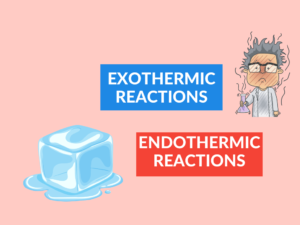What are Reactants?
Reactants are the starting substances in a chemical reaction that undergoes a transformation to form new substances called products. These substances participate in a chemical reaction and are typically shown on the left side of a chemical equation. Reactants can be elements, compounds, or ions.
Examples of Reactants:
- Hydrogen (H2) and Oxygen (O2) in the reaction to form water (H2O).
- Iron (Fe) and Sulfur (S) in the reaction to form iron(II) sulfide (FeS).
- Methane (CH4) and Oxygen (O2) in the combustion reaction that forms carbon dioxide (CO2) and water (H2O).
Uses of Reactants:
Reactants have various applications in different fields:
- In the chemical industry, reactants are utilized for the synthesis of new compounds.
- In agriculture, certain reactants are used as fertilizers to improve crop growth.
- In medicine, reactants play a crucial role in the formulation of pharmaceutical drugs.
What are Products?
Products are the substances that are formed as a result of a chemical reaction. They are the end result of the transformation of reactants and are typically shown on the right side of a chemical equation. Products can be elements, compounds, or ions.
Examples of Products:
- Water (H2O) in the reaction between hydrogen (H2) and oxygen (O2).
- Iron(II) sulfide (FeS) in the reaction between iron (Fe) and sulfur (S).
- Carbon dioxide (CO2) and water (H2O) in the combustion reaction of methane (CH4) and oxygen (O2).
Uses of Products:
The products obtained from chemical reactions have numerous uses:
- Industrial products such as polymers, plastics, and detergents are created through chemical reactions.
- Pharmaceutical products like medicines and drugs are obtained through various chemical reactions.
- Food products such as baking goods are formed through chemical reactions during the cooking process.
Differences Between Reactants and Products
| Difference Area | Reactants | Products |
|---|---|---|
| Definition | Reactants are the starting substances in a chemical reaction. | Products are the substances formed as a result of a chemical reaction. |
| Position in the Equation | Reactants are shown on the left side of a chemical equation. | Products are shown on the right side of a chemical equation. |
| Transformation | Reactants undergo a transformation to form products. | Products are formed as a result of the transformation of reactants. |
| Starting Point | Reactants are the initial substances before the reaction. | Products are the final substances after the reaction. |
| Representation | Reactants are usually written on the left-hand side of a chemical equation. | Products are typically written on the right-hand side of a chemical equation. |
| Composition | Reactants can be elements, compounds, or ions. | Products can also be elements, compounds, or ions. |
| Role | Reactants are the substances that react or undergo a change. | Products are the substances that are formed after the reaction. |
| Interaction | Reactants interact with each other to form products. | Products are the result of the interaction between reactants. |
| Representation in Equations | Reactants are represented on the left side using formulas or chemical names. | Products are represented on the right side using formulas or chemical names. |
| Orientation | Reactants are the focus at the beginning of the reaction. | Products are the main focus after the reaction is complete. |
Conclusion:
In summary, reactants are the initial substances that undergo a chemical transformation, while products are the substances formed as a result of the reaction. Reactants are shown on the left side, while products are shown on the right side of a chemical equation. They have diverse uses in various fields, including industries, agriculture, and medicine.
People Also Ask:
- What is the role of reactants and products in a chemical reaction?
- How are reactants and products represented in a chemical equation?
- Can reactants and products be elements?
- What happens to reactants during a chemical reaction?
- Can the same substance be both a reactant and a product?
Reactants participate in a chemical reaction and are transformed to form products. Reactants provide the starting point for the reaction, while products are the end result of the reaction.
Reactants are typically written on the left-hand side of a chemical equation, and products are written on the right-hand side.
Yes, both reactants and products can be elements. For example, in the reaction between hydrogen and oxygen to form water, both hydrogen and oxygen are elements.
Reactants undergo a chemical transformation, where the bonds between atoms are broken and rearranged to form new substances known as products.
Yes, in some chemical reactions, a substance can act as both a reactant and a product. It depends on the complexity of the reaction and the substances involved.


